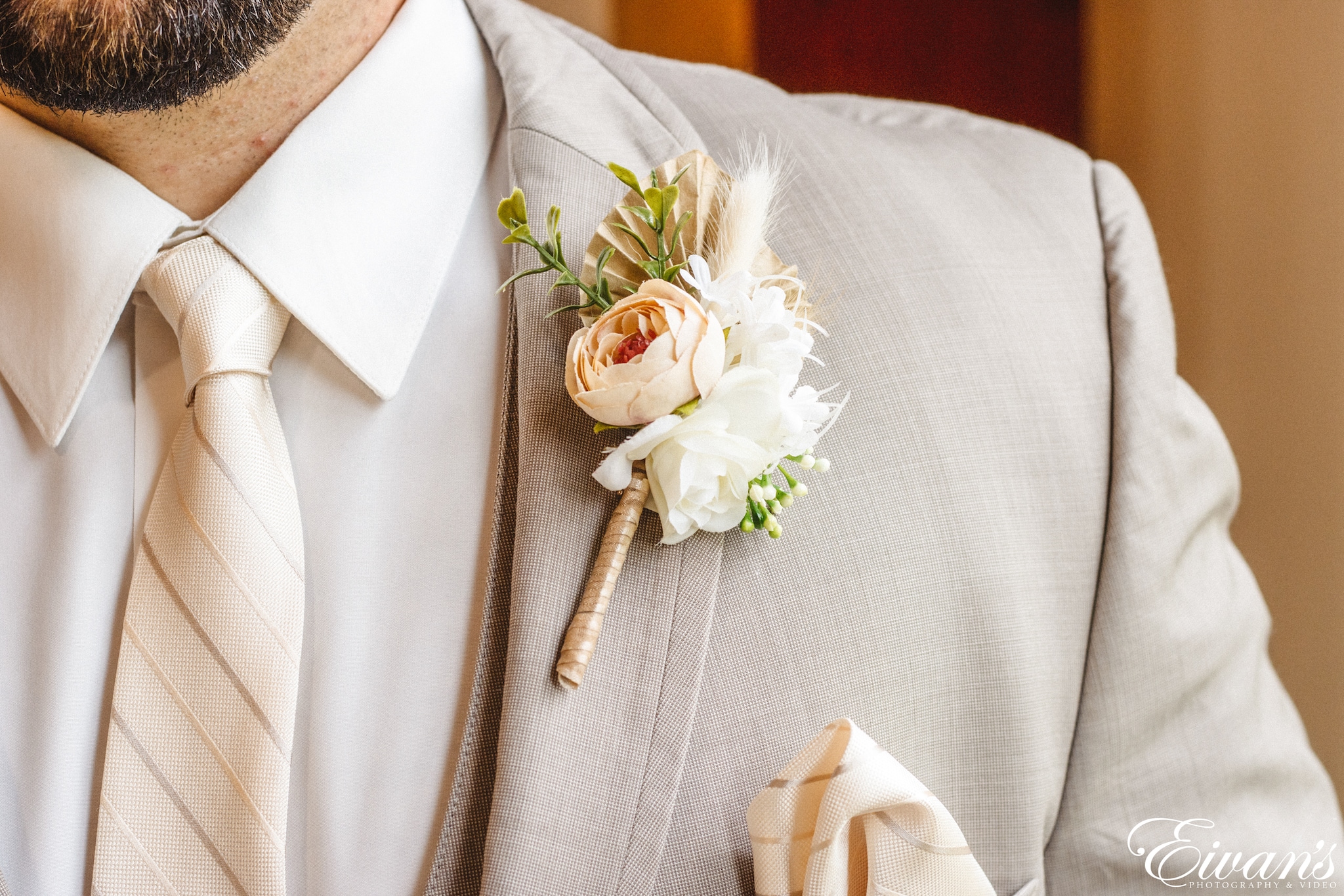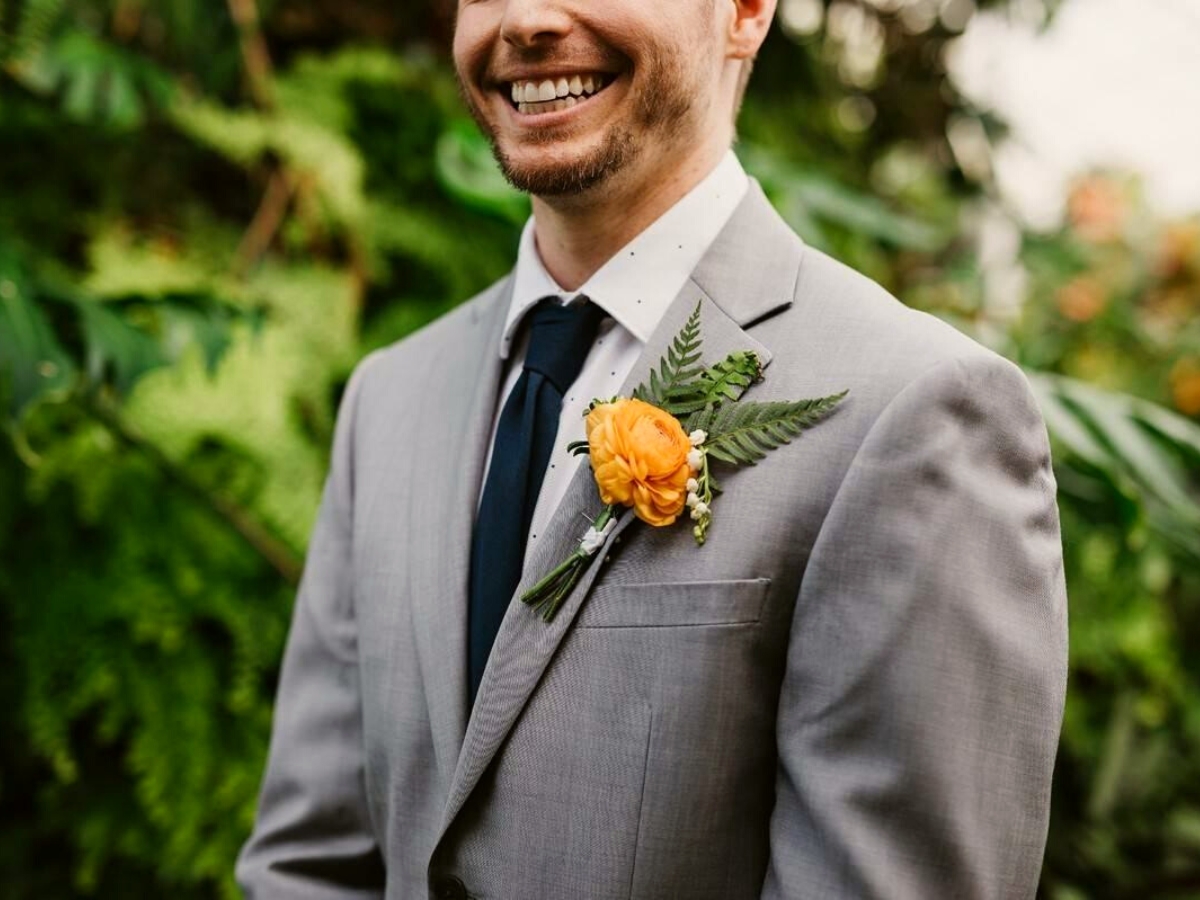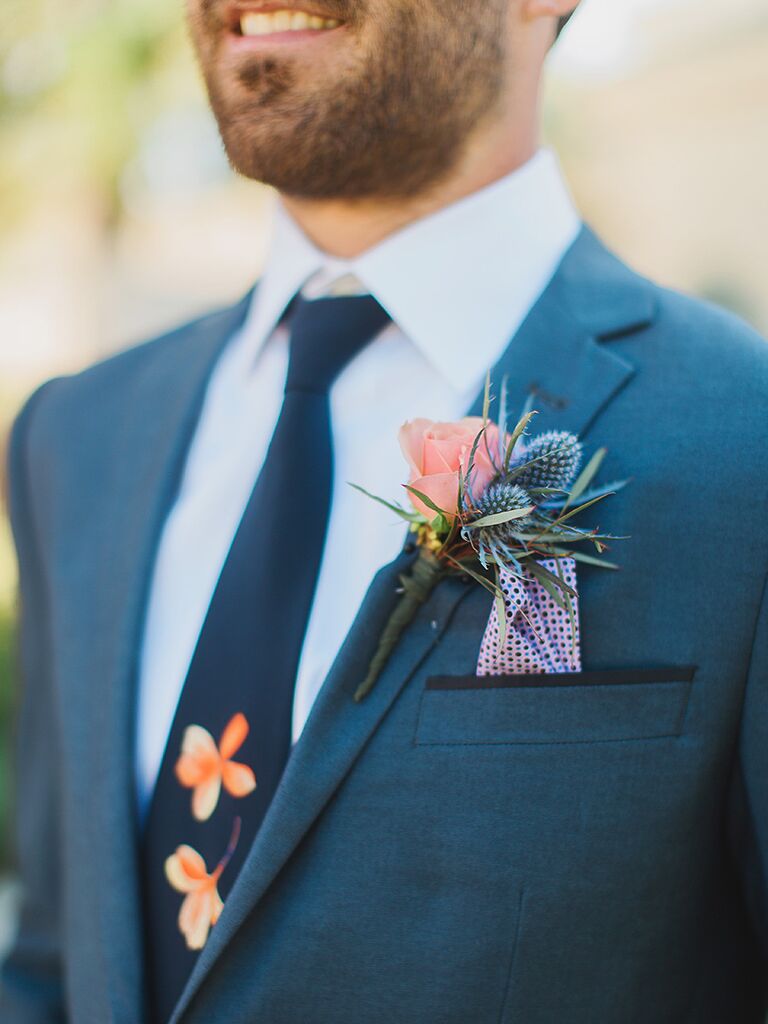The Boutonniere: A Timeless Embellishment of Style, Significance, and Sentiment

The boutonniere, a small floral arrangement worn on the lapel of a suit or jacket, has long been a symbol of elegance, celebration, and personal expression. More than just a decorative accessory, the boutonniere carries a rich history, evolving from practical necessity to a powerful statement piece. From weddings and proms to galas and everyday wear, understanding the intricacies of the boutonniere – its history, construction, etiquette, and modern interpretations – allows us to appreciate its enduring appeal and the subtle language it speaks.
A History Rooted in Protection and Practicality:
The story of the boutonniere begins not with fashion, but with a more pragmatic purpose. In ancient times, small bouquets of herbs and spices were worn close to the face as a defense against unpleasant odors and the spread of disease. These fragrant posies, often called "tussie-mussies," were believed to ward off illness and purify the air. As hygiene improved and the need for aromatic protection diminished, these small bouquets transitioned from essential to ornamental.
The modern boutonniere’s direct ancestor emerged in the 16th and 17th centuries, particularly during the reign of Louis XIV in France. Known as "nosegays," these elaborate floral arrangements were worn by both men and women, reflecting the opulence and extravagance of the era. These nosegays, often featuring precious jewels and intricate designs, were a visible display of wealth and status.
The boutonniere as we recognize it today began to solidify in the 19th century. The Victorian era, known for its rigid social customs and symbolic flower language (floriography), played a pivotal role. A single flower, often a rose, was considered a token of affection and admiration. Men would wear these single blooms as a subtle declaration of their feelings for a particular woman. The tradition evolved, and boutonnieres became more common at formal events, particularly weddings, where they symbolized love, unity, and celebration.
Construction: The Art of the Miniature Bouquet:
Creating a boutonniere is an art form, requiring a delicate balance of floristry skills and attention to detail. The process involves selecting appropriate flowers and foliage, arranging them artfully, and securing them in a way that ensures longevity and comfort.
The choice of flowers is paramount. Roses remain a classic choice, but other popular options include carnations, orchids, ranunculus, succulents, and even small berries or foliage. The selection should complement the wearer’s attire, the event’s theme, and, if applicable, the overall floral arrangements.
The construction process typically involves the following steps:
- Flower Selection and Preparation: Choosing fresh, vibrant blooms is crucial. Flowers are typically cut with a short stem, leaving just enough length for secure attachment. Any unwanted leaves or thorns are removed to create a clean and polished look.
- Foliage Incorporation: Adding foliage provides texture and visual interest. Common choices include ferns, eucalyptus, baby’s breath, and various greenery. The foliage should be carefully arranged to complement the flowers without overpowering them.
- Arrangement: The flowers and foliage are arranged in a compact and aesthetically pleasing manner. The arrangement should be balanced and visually appealing, with the focal flower prominently displayed.
- Securing: Once the arrangement is finalized, the stems are tightly bound together using floral tape. This provides a secure base and helps to prevent the flowers from wilting prematurely.
- Finishing Touches: The floral tape is typically covered with ribbon or twine for a more polished look. A pin or magnetic clasp is attached to the back of the boutonniere for easy and secure attachment to the lapel.

Modern boutonnieres often incorporate unique elements, such as feathers, beads, or even small pieces of hardware, to create a more personalized and contemporary look.
Etiquette: Navigating the Boutonniere Landscape:
Wearing a boutonniere comes with certain unspoken rules and considerations. Adhering to these guidelines ensures that the boutonniere is worn correctly and contributes to, rather than detracts from, the overall aesthetic.
- Placement: The boutonniere is traditionally worn on the left lapel of a suit jacket or tuxedo. The stem should be positioned downwards, with the flower facing outwards.
- Attachment: The boutonniere should be securely attached to the lapel using a pin or magnetic clasp. The pin should be inserted through the back of the lapel and then through the stem of the boutonniere, securing it in place. Avoid piercing the flower petals.
- Occasion: Boutonnieres are typically worn at formal events, such as weddings, proms, galas, and funerals. They can also be worn at less formal occasions, such as cocktail parties or dinner dates, to add a touch of elegance and style.
- Coordination: The boutonniere should complement the wearer’s attire and the event’s theme. Consider the color and style of the suit or jacket, as well as the overall aesthetic of the event.
- Respect: The boutonniere is often a symbol of respect, admiration, or celebration. Wear it with pride and treat it with care.

Modern Interpretations: Beyond the Classic Rose:
While the classic rose boutonniere remains a timeless choice, modern interpretations have pushed the boundaries of creativity and innovation. Today’s boutonnieres embrace a wider range of materials, styles, and designs, reflecting individual personalities and contemporary trends.
- Succulent Boutonnieres: These unique boutonnieres feature small succulents as the focal point, offering a modern and eco-friendly alternative to traditional flowers.
- Non-Floral Boutonnieres: Boutonnieres crafted from feathers, fabric, wood, or even repurposed materials offer a creative and unconventional option.
- Themed Boutonnieres: Boutonnieres can be customized to reflect a specific theme or interest, such as a sports team, a hobby, or a favorite movie.
- Minimalist Boutonnieres: Simple and understated boutonnieres featuring a single flower or a small sprig of greenery are perfect for those who prefer a more subtle and refined look.
- DIY Boutonnieres: Crafting your own boutonniere allows for complete customization and personalization. This is a great option for those who want to create a unique and meaningful accessory.
The Boutonniere’s Enduring Appeal:
Despite evolving trends and changing fashion sensibilities, the boutonniere has maintained its position as a timeless embellishment of style and significance. Its enduring appeal lies in its ability to add a touch of elegance, personality, and sentiment to any occasion. The boutonniere is more than just a decorative accessory; it is a symbol of celebration, respect, and personal expression. By understanding its history, construction, etiquette, and modern interpretations, we can appreciate the boutonniere’s enduring legacy and the subtle language it speaks.
FAQ: Boutonniere Queries Answered
Q: What is the difference between a boutonniere and a corsage?
A: A boutonniere is a small floral arrangement worn by men on the lapel of a suit or jacket, while a corsage is a similar arrangement worn by women, typically on the wrist or pinned to clothing.
Q: How do I choose the right boutonniere?
A: Consider the event’s formality, the wearer’s attire, and any specific themes or preferences. Coordinate the colors and style of the boutonniere with the overall aesthetic.
Q: How do I attach a boutonniere correctly?
A: Use a pin or magnetic clasp to secure the boutonniere to the left lapel of the suit or jacket. The stem should point downwards, and the flower should face outwards.
Q: How can I keep my boutonniere fresh for longer?
A: Store the boutonniere in the refrigerator until it’s time to wear it. Lightly mist the flowers with water to keep them hydrated.
Q: Can I make my own boutonniere?
A: Yes! DIY boutonnieres are a great way to personalize your accessory. There are many tutorials and resources available online to guide you through the process.
Q: Are boutonnieres only for formal events?
A: While traditionally worn at formal events, boutonnieres can also be worn at less formal occasions to add a touch of elegance and style.
Q: What are some alternatives to traditional flower boutonnieres?
A: Alternatives include succulent boutonnieres, non-floral boutonnieres made from feathers or fabric, and themed boutonnieres that reflect a specific interest.
Q: Can I wear a boutonniere on a blazer or sport coat?
A: Yes, a boutonniere can be worn on a blazer or sport coat, but it’s generally more appropriate for dressier occasions or when you want to elevate your look.
Q: Is it okay to wear a boutonniere if I’m not part of the wedding party?
A: Generally, boutonnieres are reserved for the wedding party (groom, groomsmen, fathers of the bride and groom). If you’re not part of the wedding party, it’s best to avoid wearing one, as it could be misconstrued.
Q: Can I wear a boutonniere with a pocket square?
A: Yes, you can wear a boutonniere with a pocket square. Just make sure they complement each other and don’t clash. A simple, understated pocket square often works best.
Conclusion: The Boutonniere’s Enduring Legacy
From its humble beginnings as a fragrant defense against disease to its current status as a symbol of style and sentiment, the boutonniere has undergone a remarkable transformation. This small floral embellishment, worn close to the heart, continues to captivate and inspire, offering a timeless expression of elegance, celebration, and personal expression. Whether you choose a classic rose, a modern succulent, or a creative non-floral design, the boutonniere remains a powerful symbol of connection and a subtle reminder of the beauty and significance of life’s special moments. As fashion evolves and personal styles continue to diversify, the boutonniere will undoubtedly adapt and reinvent itself, ensuring its enduring legacy as a cherished and meaningful accessory for generations to come.

